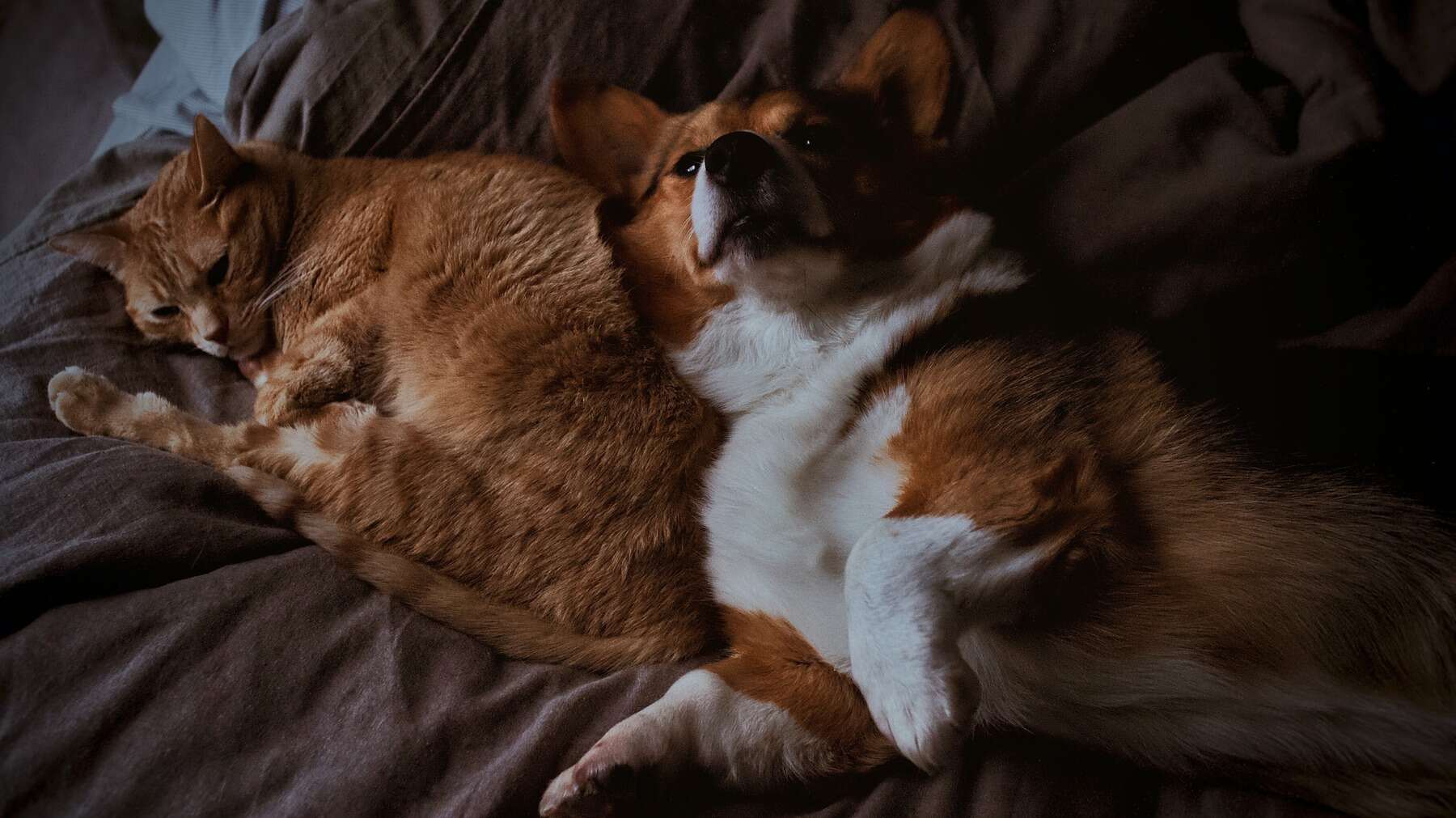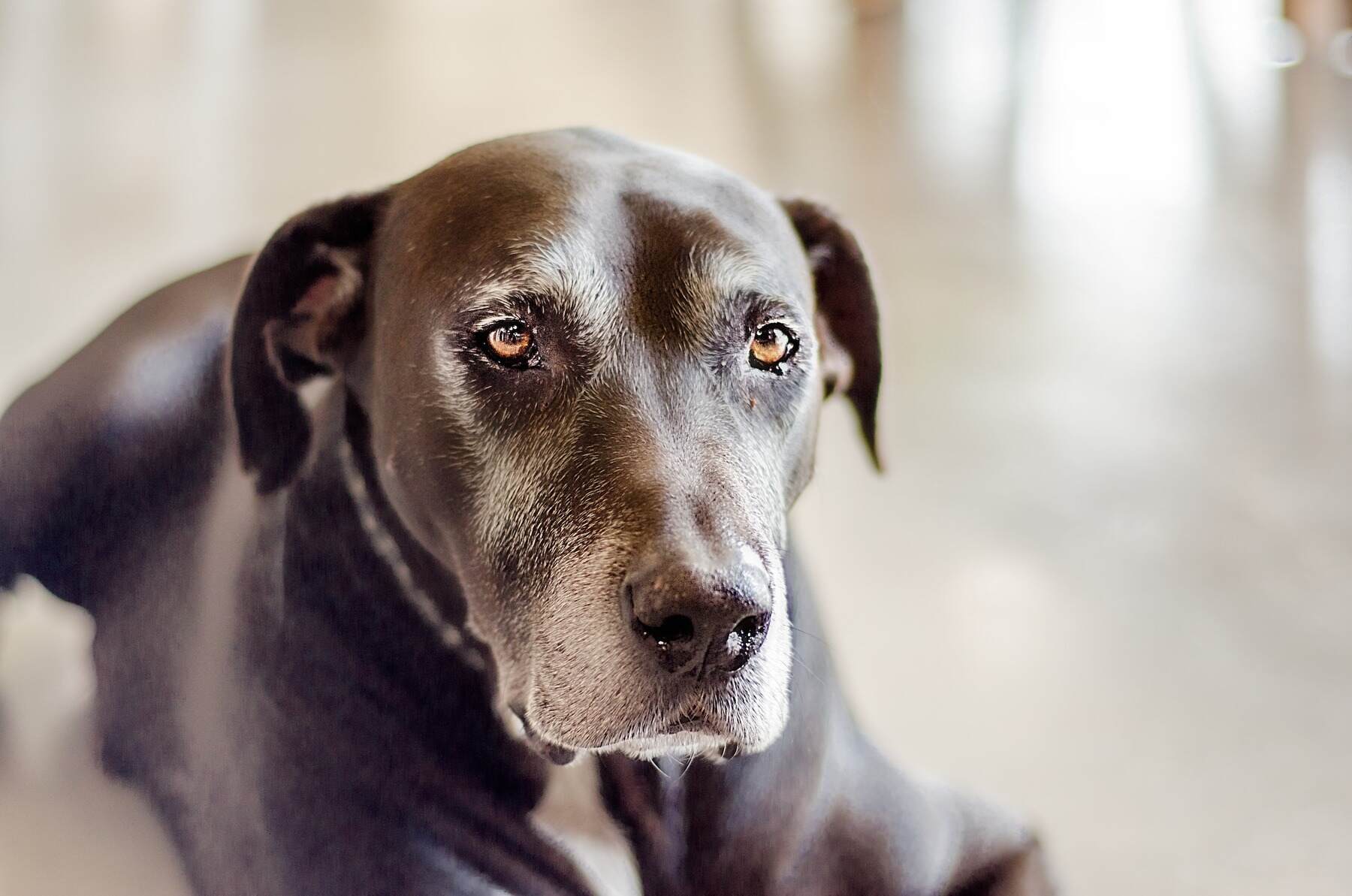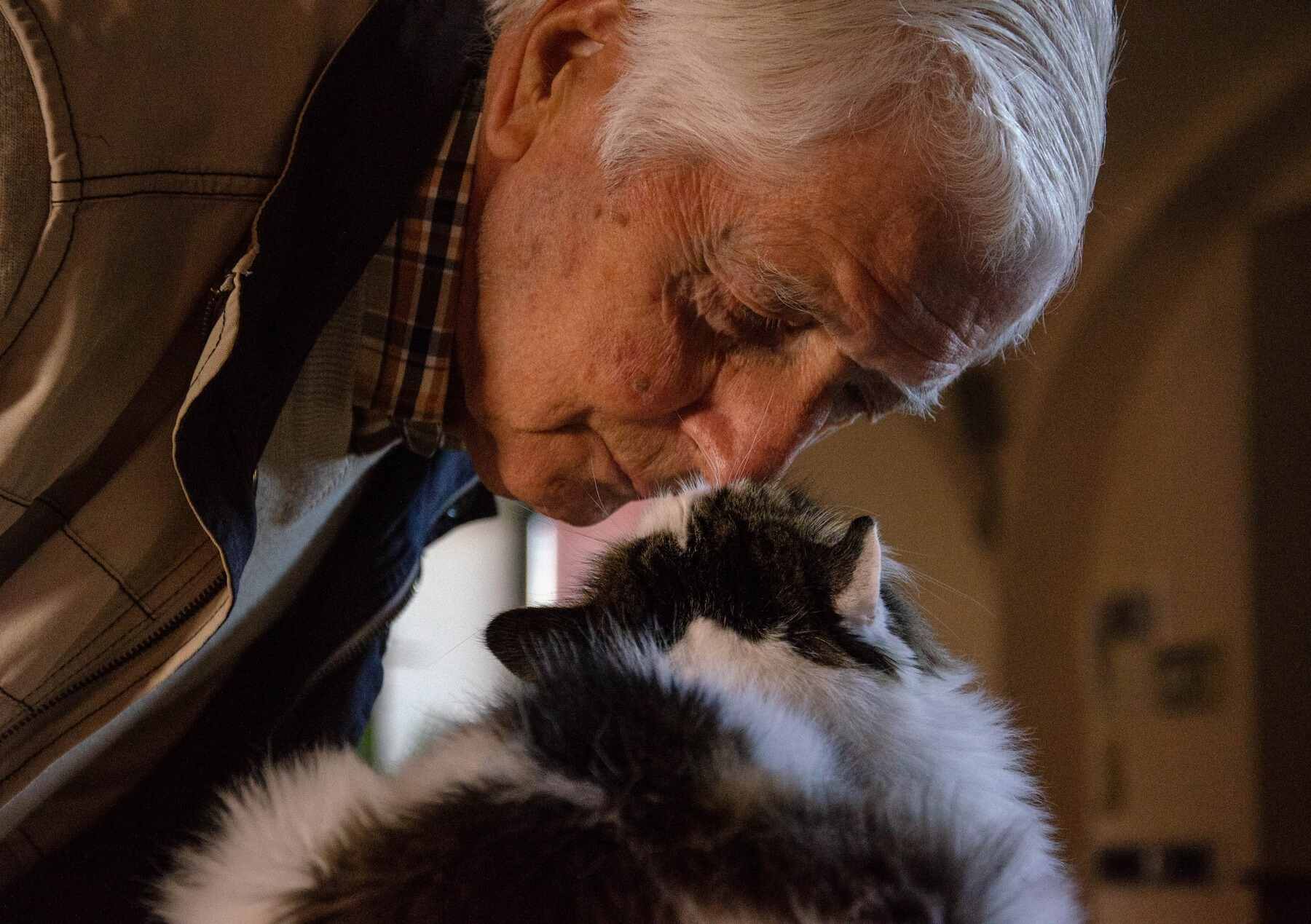I understand, as a veterinarian, the unique challenges of caring for senior pets. In this article, titled “Senior Pet Care: Keeping Your Aging Dog or Cat Healthy,” I aim to provide valuable insights for pet owners who are navigating the journey of caring for their beloved aging companions.
They encounter various difficulties when it comes to elderly pet care. With years of experience and expertise in this area, I have witnessed firsthand the importance of proactive and compassionate senior animal care. Here, I aim to address these concerns and offer practical solutions to enhance the quality of life for our aging dogs or cats.
Contents
Senior Pet Care: Keeping Your Aging Dog or Cat Healthy
As our furry companions age gracefully by our side, their needs evolve, requiring us to provide them extra love, attention, and care. Senior pets hold a special place in our hearts, and ensuring their comfort, wellness, and grooming bliss becomes paramount to their quality of life.
This comprehensive guide delves into the essential aspects of creating a nurturing environment, conducting elderly pet wellness examinations, and indulging them in the pampering they deserve through proper grooming techniques.
Health Issues in Older Pets
As our furry friends enter their senior years, they become more susceptible to certain health issues impacting their well-being. Pet owners must know these common health concerns to detect them early and provide appropriate care. Here are some of the key health issues that older dogs and cats may face:
- Arthritis and joint pain: Aging pets are prone to developing arthritis, which causes inflammation and joint pain. Watch for signs of stiffness, reluctance to move, or difficulty climbing stairs.
- Dental problems: Dental issues such as periodontal disease and tooth decay are prevalent. Regular dental check-ups and dental hygiene practices can help prevent discomfort and maintain oral health.
- Vision and hearing loss: Just like humans, pets may experience a decline in their vision and hearing as they age. Observe any changes in their behavior, such as bumping into objects or being less responsive to sounds.
- Cognitive decline: Cognitive dysfunction syndrome (CDS) is a condition that affects the brain function of older pets. Symptoms may include confusion, disorientation, changes in sleep patterns, and decreased social interaction.
- Urinary problems: They may develop urinary issues, such as incontinence or urinary tract infections. Look out for signs of accidents in the house, frequent urination, or blood in the urine.
- Cancer: Cancer risk increases with age in dogs and cats. Regular veterinary check-ups and being vigilant for any unusual lumps, bumps, or changes in behavior are essential for early detection and treatment.
By staying vigilant and recognizing these potential health issues, pet owners can seek timely veterinary care and take necessary measures to manage and improve their senior pets’ health and well-being. Remember, regular check-ups with our veterinarians are crucial for early detection and effective management of these health concerns.
Diet and Exercise for Senior Pets
Proper nutrition and exercising more often for pets are fundamental pillars of senior animal care. As our furry friends age, their dietary and exercise needs may change. Here are some essential considerations to ensure your aging dog or cat receives the right diet and exercise regimen:
Diet
- Consult with your veterinarian: Seek guidance from our veterinarians to determine the most suitable elderly pet diet for your furry companion. They can recommend specific dietary requirements based on your pet’s breed, size, weight, and any existing health conditions.
- Opt for age-appropriate food: They often require a specialized diet that caters to their changing nutritional needs. Look for pet foods labeled specifically for “senior” or “mature” pets, as these formulas are formulated to support their aging bodies.
- Focus on quality ingredients: Choose pet foods that contain high-quality protein sources, such as lean meats or fish. Look for ingredients like whole grains, fruits, and vegetables that provide essential vitamins, minerals, and antioxidants.
- Consider portion control: Older pets tend to have lower activity levels and slower metabolisms. Adjust their portion sizes accordingly to prevent weight gain and obesity, which can exacerbate health issues.
- Provide frequent, smaller meals: Instead of feeding one or two large meals, consider dividing the daily food portion into several smaller meals. This approach aids digestion and prevents discomfort, particularly for pets with gastrointestinal sensitivities.
Exercise
- Tailor exercise to their abilities: Older pets may have reduced mobility or joint issues, so adapting the exercise routine to their abilities is important. Gentle activities like short walks, swimming, or interactive play sessions can help keep them active without causing excessive strain.
- Monitor for signs of fatigue: Pay attention to your pet’s energy levels during exercise. If they become excessively tired or show signs of discomfort, it is time to take a break. Overexertion can lead to injuries or exacerbate existing health conditions.
- Mental stimulation: Engage them in mentally stimulating activities like puzzle toys or training exercises. Mental stimulation can help keep their minds sharp and ward off cognitive decline.
- Environmental enrichment: Provide a stimulating environment for your pet by offering toys, scratching posts, and climbing structures. These additions can encourage physical activity and prevent boredom.
- Regular veterinary check-ups: Regular visits to the veterinarian will help assess your pet’s overall health and ensure that they are fit for exercise. Your veterinarian can provide specific recommendations based on your pet’s individual needs.
You can assist your senior animal in maintaining a healthy weight, bolstering their immune system, and enhancing their general well-being by feeding them a balanced diet and giving them appropriate exercise. Recall that working with our veterinarians can help you design a customized program appropriate for your pet’s needs.
Managing Chronic Conditions
As our pets age, they may develop chronic conditions that require ongoing management. Here are important strategies for effectively managing these conditions and ensuring the well-being of your senior pet:
- Medication adherence: Administer any prescribed medications as directed by your veterinarian. It is essential to follow the recommended dosage and maintain a regular medication schedule to effectively manage the chronic condition.
- Symptom monitoring: Keep a close eye on your pet’s symptoms and behavior, and promptly report any changes to our veterinarians. Regular monitoring allows for early detection of worsening symptoms or the need for adjustments to the treatment plan.
- Comfortable environment: Create a comfortable and safe environment for your senior pet. Provide them with a warm, cozy bed and easy access to food and water, and consider using ramps or pet stairs to help them reach elevated surfaces. Orthopedic beds can provide relief for pets with arthritis or joint pain.
- Behavioral enrichment: Engage them in activities that stimulate their mind and keep them mentally active. Puzzle toys, treat-dispensing toys, and interactive play sessions can help prevent cognitive decline and provide mental stimulation.
- Regular veterinary check-ups: Schedule regular visits to our veterinarians to monitor the progression of chronic conditions and make adjustments to the treatment plan as needed. They can provide valuable guidance and ensure your pet is receiving the best possible care.
- Nutritional support: Work with them to develop a diet plan that supports your pet’s specific chronic condition. Certain medical diets or supplements may help manage conditions such as kidney disease, diabetes, or heart conditions.
Remember that every pet is unique, and the management of chronic conditions may vary. Working closely with our veterinarians to develop an individualized care plan that addresses your senior pet’s specific needs and optimizes their overall health and well-being is critical.
Senior Pet Wellness Examinations
Regular wellness examinations are vital for maintaining the health and well-being of senior pets. Senior animal wellness examinations allow veterinarians to assess your pet’s overall health, detect potential issues early, and recommend appropriate interventions. Here are key aspects of elderly pet wellness examinations:
- Frequency of examinations: They should undergo wellness examinations at least twice a year, yet the frequency may vary depending on your pet’s specific needs and health status. Regular check-ups allow our veterinarians to closely monitor any changes and intervene promptly if necessary.
- Comprehensive physical examination: During the examination, our veterinarians will perform a thorough physical examination. This includes assessing your pet’s weight, body condition, coat and skin health, dental health, heart and lung function, joint mobility, and overall mobility.
- Diagnostic tests: Our veterinarians may recommend diagnostic tests to evaluate their internal health. These may include blood work, urinalysis, fecal examination, and imaging (such as X-rays or ultrasound). These tests can provide valuable insights into organ function, detect early signs of disease, and help guide treatment decisions.
- Dental evaluation: Dental health is particularly important in senior pets as dental disease can lead to various health problems. Our veterinarians will examine your pet’s teeth and gums, looking for signs of periodontal disease, tooth decay, or other dental issues. They may recommend professional dental cleaning or other interventions if necessary.
- Vaccinations and parasite prevention: Even in their senior years, cats and dogs may still require certain vaccinations to prevent common diseases. Our veterinarians will assess your pet’s vaccination status and recommend any necessary updates. Additionally, parasite prevention measures, such as flea and tick control, should remain a part of their healthcare routine.
- Nutritional assessment: They often have specific dietary needs. Our veterinarians can guide the appropriate nutrition for your pet’s age, breed, weight, and underlying health conditions during the wellness examination. They may recommend specialized diets or supplements to support your pet’s overall health and address specific needs.
- Behavior and cognitive assessment: Behavioral changes and cognitive decline can occur in senior pets. Our veterinarians will inquire about changes in behavior or mental function, such as confusion, disorientation, or anxiety. They can offer recommendations and interventions to manage these issues and enhance your pet’s quality of life.
- Discussion and education: Wellness examinations allow you to discuss any concerns or observations you have about your pet’s health. Our veterinarians can address your questions, provide guidance on senior animal care, and educate you about age-related conditions to watch for.
Routine exams can help you monitor your pet’s health and identify possible problems early. Our veterinarians can create a personalized healthcare plan that caters to their unique requirements, improves their quality of life, and extends their overall health with this proactive approach.
Senior Pet Grooming
As pets age, their grooming needs may change and require additional care and attention. Frequent grooming sessions improve your senior pet’s general health and keep them looking their best. Here are important considerations for grooming senior pets:
- Brushing and coat care: Regular brushing helps keep their coat clean, tangle-free, and in good condition. It removes loose hair, stimulates the skin, and helps distribute natural oils. Depending on your pet’s coat type, you may need to adjust the frequency and type of brush used. Be gentle and patient, especially if your pet has joint issues or sensitive areas.
- Bathing: They may require bathing more frequently than when they were younger, especially if they have mobility issues or develop skin conditions. Use a mild, pet-friendly shampoo and warm water. Take care not to make the water too hot or cold, as older pets may be more sensitive to temperature changes. If your elderly pet has difficulty standing, consider using non-slip mats or providing extra support during bathing.
- Nail trimming: Regular nail trims are essential to prevent overgrowth, discomfort, and potential injuries. Older pets may have more brittle nails, so be cautious and trim small sections to avoid cutting quickly. If you are unsure or uncomfortable with nail trimming, ask our veterinarians or a professional groomer for assistance.
- Ear and dental care: Check their ears regularly for signs of infection, wax buildup, or inflammation. Gently clean the outer ear with a damp cloth or a veterinarian-approved ear cleaner. Dental care is equally important, as older pets are more prone to dental disease. Brush your pet’s teeth regularly with a pet-safe toothbrush and toothpaste, and schedule professional dental cleanings as your veterinarian recommends.
- Eye care: Senior pets may develop eye conditions such as cataracts, dry eyes, or glaucoma. Keep your pet’s eyes clean by gently wiping away any discharge with a clean, damp cloth. If you notice persistent eye issues or changes in vision, consult our veterinarians for further evaluation and guidance.
- Anal gland expression: Some senior pets may require regular anal gland expression. These glands near the rectum can become impacted or infected, causing discomfort. If your pet scoots their bottom or shows signs of discomfort, consult our veterinarians or a professional groomer to have the anal glands expressed.
- Adjustments for mobility and comfort: Older pets with mobility issues may find it challenging to maintain certain grooming positions. Provide supportive surfaces or use ramps or steps to make grooming more accessible. If necessary, seek assistance from a professional grooming facility that is experienced in handling them or has specialized equipment to accommodate their needs.
- Observation and communication: While grooming your senior pet, closely observe their skin, coat, and overall condition. Look for abnormalities such as lumps, bumps, skin irritations, or changes in the coat’s texture or thickness. Report any concerns or changes to our veterinarians, as they may indicate underlying health issues requiring further evaluation and treatment.
Remember to approach grooming appointments with kindness, patience, and consideration for the comfort of your elderly pet. If you have any concerns or questions about grooming techniques or specific needs for your senior pet, consult our veterinarians or seek guidance from a professional groomer.
Ensuring Comfort for Your Senior Pet’s Environment
Creating a comfortable and supportive environment is essential for the well-being of your senior pet. Their needs may change as they age, and providing them with a safe and comfortable space becomes increasingly important. Here are some key considerations to ensure your senior pet’s environment promotes their comfort:
- Soft and cozy bedding: Provide them with a soft, supportive bed that cushions their joints and provides overall comfort. Consider an orthopedic bed, which can help alleviate pressure points and relieve pets with arthritis or joint pain.
- Temperature control: Keep their environment comfortable to avoid extremes of heat or cold. Older pets may be more sensitive to temperature changes, so ensure they have a warm space during colder months and access to shade or a cool area during warmer months.
- Easy access to essential resources: Set up your pet’s living space to make it easily accessible for them. Place food and water bowls, litter boxes, and comfortable resting spots on the main level of your home, avoiding the need for them to navigate stairs or jump onto high surfaces.
- Slip-resistant surfaces: They may have reduced mobility and stability, making it important to provide slip-resistant surfaces throughout their environment. Use area rugs or carpet runners on slippery floors to help them maintain their footing and prevent accidents or injuries.
- Adequate lighting: Ensure that the areas where they spend time are well-lit. Dim lighting can make it more challenging for them to navigate and may contribute to anxiety or confusion. Consider using nightlights or additional lighting sources to improve visibility, especially during nighttime.
- Safety considerations: Assess your home for potential hazards that could pose a risk to them. Secure loose cords, remove toxic plants or substances, and block off areas where they could become stuck or injured. Consider using baby gates to restrict access to certain areas if necessary.
- Environmental enrichment: Provide mental stimulation and entertainment for them. Offer toys, puzzle feeders, or interactive games that are appropriate for their age and physical abilities. Mental stimulation can help keep their minds sharp and improve their overall well-being.
- Regular grooming: Regular grooming sessions can help maintain their comfort and cleanliness. Brush their coat to prevent matting, trim their nails regularly, and pay attention to their dental hygiene.
Remember to monitor their behavior and adjust their environment as needed. Pay attention to any signs of discomfort or changes in mobility, and consult with your veterinarian for additional recommendations specific to your pet’s needs.
The Age When a Pet Becomes a Senior
Determining the exact age at which a pet is considered a senior can vary depending on several factors, including the species, breed, and individual health. While there is no definitive age that applies to all pets universally, it is generally accepted that dogs and cats enter their senior years between the ages of 7 and 10.
However, large dog breeds tend to have shorter lifespans and may be considered seniors as early as five or six years old, while smaller breeds may not reach their senior stage until around eight or nine years old. When it comes to cats, they typically reach their senior years around the age of seven. Some common signs of aging in pets include:
- Graying of the fur: Just like humans, pets may develop gray hairs as they age, particularly around the face and muzzle.
- Reduced energy and activity levels: Senior pets may become less active and prefer more restful activities rather than vigorous play or exercise.
- Weight changes: Older pets may experience weight gain or weight loss. Monitoring their weight and adjusting their diet accordingly is important for maintaining a healthy body condition.
- Decreased mobility: Arthritis and other joint conditions can cause stiffness and movement difficulty, especially when climbing stairs.
- Changes in behavior: They may exhibit changes in behavior, such as increased irritability, confusion, or decreased interest in social interaction.
While age is an important factor, it is also essential to consider the individual pet’s overall health and any specific conditions they may have. Regular veterinary check-ups become even more crucial during the senior years, allowing veterinarians to assess your pet’s health, catch any potential issues early, and provide appropriate care and recommendations.
Related Questions
What is the Lifespan of Dogs and Cats?
A dog’s lifespan varies depending on breed, size, and overall health, yet dogs live between 10 and 13 years on average. Cats have a longer lifespan, ranging from 12 to 16 years on average, yet some can live well into their twenties. Proper healthcare, nutrition, exercise, and a loving environment can all help extend the lives of dogs and cats.
When Should You Say Goodbye to a Senior Pet?
Knowing when to say goodbye to a senior animal is a deeply personal and difficult decision. It is typically recommended to consider euthanasia if the pet is experiencing chronic pain, has a poor quality of life, or if there is a medical condition that is no longer manageable. Consulting with our veterinarians and considering the pet’s overall well-being can help.
Are Cats Better Than Dogs When They Age?
The suitability of cats or dogs as pets when they age depends on personal preferences and lifestyle. Cats tend to be more independent and require less physical activity, making them potentially easier to care for regarding exercise and mobility. However, dogs offer companionship, loyalty, and opportunities for social interaction.
Conclusion
Caring for a senior pet is a gratifying experience that requires diligence and compassion. Pet owners can provide their beloved companions with the best possible care by understanding the health issues aging dogs and cats commonly face, adopting appropriate diet and exercise practices, and effectively managing chronic conditions.





